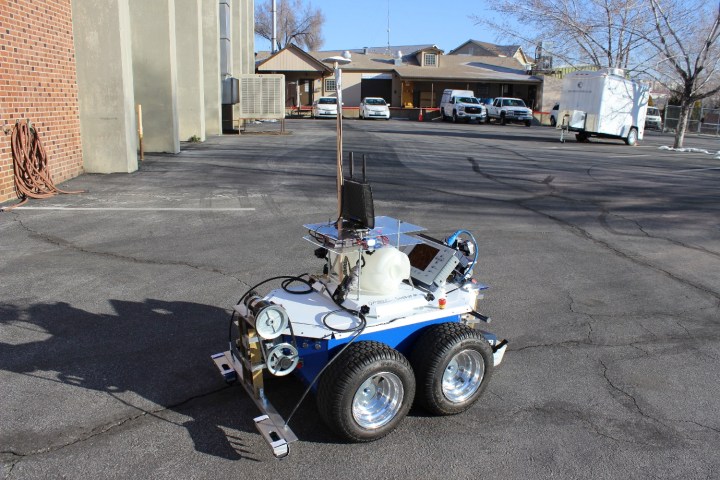
The four-wheeled robot bridge inspector, called Seekur, uses a variety of tools to carry out its important task. These include ground-penetrating radar for looking beneath the surface of a bridge for underlying instabilities, sensors designed to search for possible corrosion of steel or cement, and a camera which analyzes cracks in the bridge’s surface.
Related: Water Pipe Locating Equipment
A machine learning algorithm then analyzes all of this information and uses it to generate a color-coded map, which is passed on to (human) engineers to make them aware of weak spots. Impressively, this vital analysis work can be carried out in real time.
“The robot takes the same amount of time to physically scan the bridge as a human inspector but it processes the data in minutes instead of hours,” lead researcher Spencer Gibb told New Scientist.

Already, the robot has been tested on road bridges in Nevada, New Hampshire, Maine, and Montana. In all cases, it was reportedly faster and more accurate than human inspectors.
As with other areas where machine learning has been used for prediction, the ambition is that using AI to help assess the stability of bridges could cut down on human error. While human bridge inspectors perform a valuable job, they are capable of missing details. For example, in 2007 a bridge over the Mississippi river in Minnesota collapsed due to defects in steel plates which had been missed by safety inspectors. Thirteen people tragically lost their lives in the collapse.
There is no guarantee that a robot would not also make errors, of course, but it would be easier to ensure that they have carried out full examinations. Furthermore, due to the shortage of human inspectors, the presence of Seekur robots would hopefully result in more regular check-ups for the thousands of bridges around the United States.
Digital Trends contacted Spencer Gibb, but he was unable to provide more details about the potential rollout of the bridge-checking bots at this time.
Editors' Recommendations
- World’s most advanced robotic hand is approaching human-level dexterity
- Good at StarCraft? DARPA wants to train military robots with your brain waves
- Yakuza director thinks PS5’s evolution will focus on A.I. and machine learning


